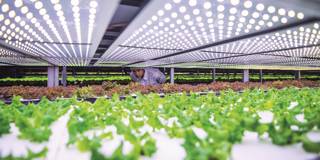
Feeding a Greener World
Though most people take food production more or less for granted, it is a critical front in all of the most pressing environmental issues of the day. Without more sustainable agricultural practices, humanity can look forward to a future of runaway climate change, ecological destruction, and food insecurity.
NORWICH – There is unequivocal evidence that most contemporary agricultural practices are unsustainable, and have been a significant source of terrestrial biodiversity loss in recent decades. But this need not be the case. Feeding the world and enhancing conservation are complementary – and even closely interdependent – goals.